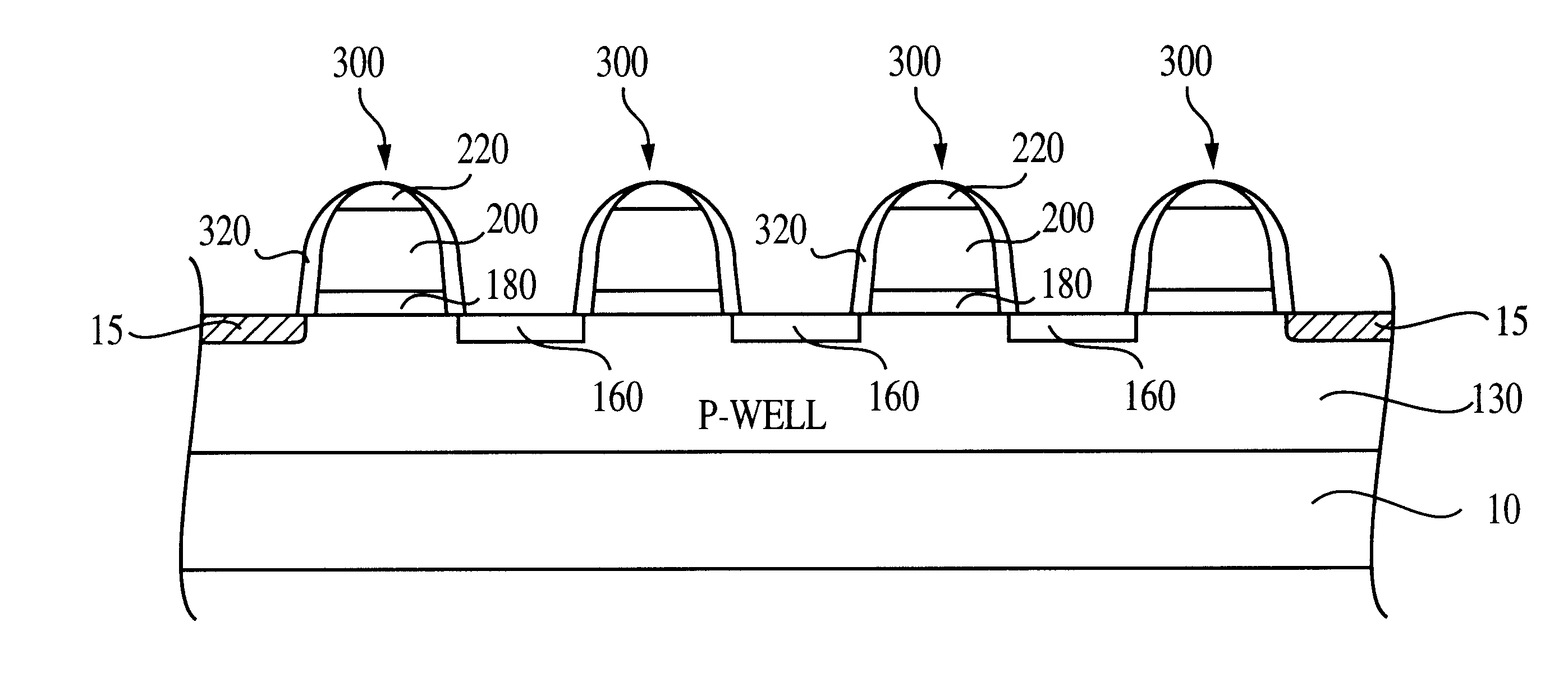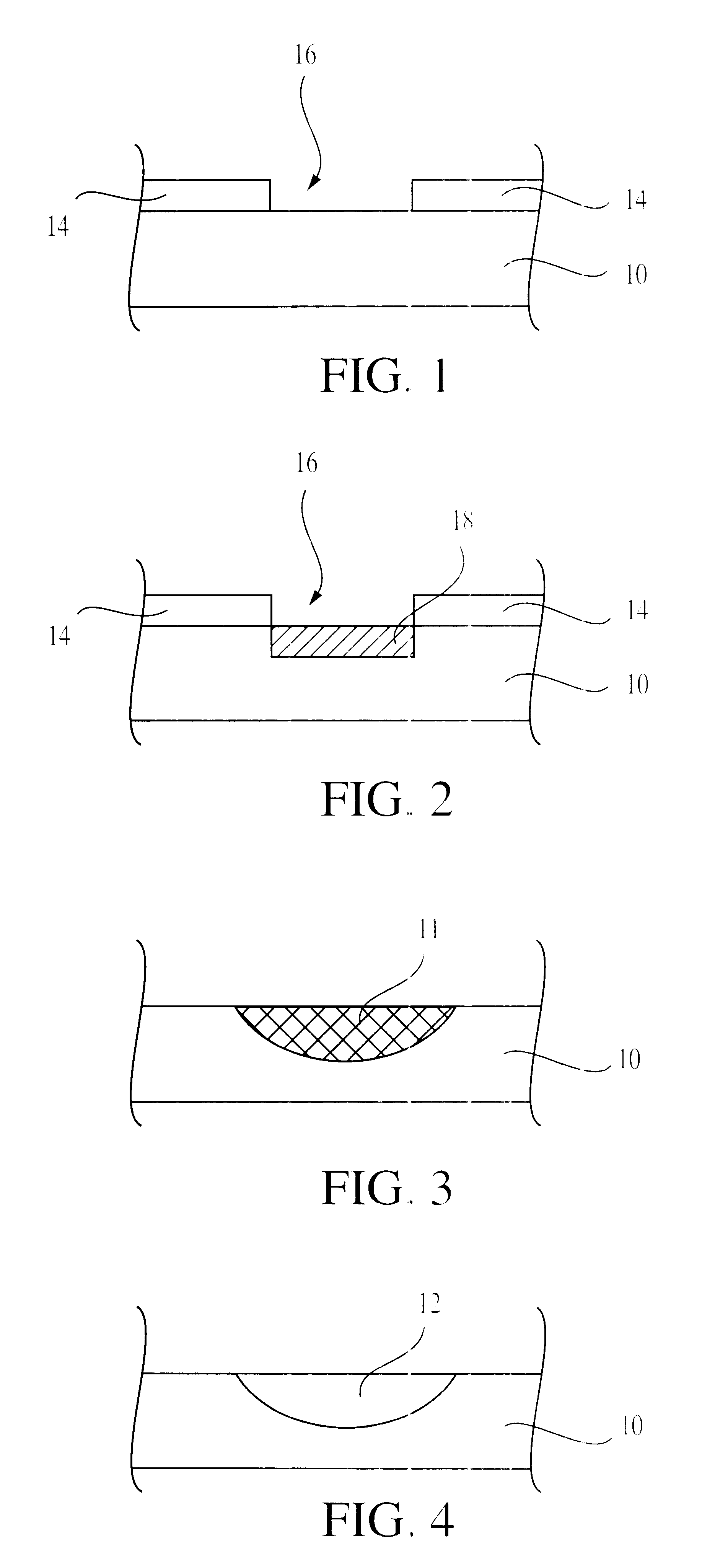Method for making shallow trenches for isolation
a technology of isolation trenches and shallow trenches, which is applied in the direction of basic electric elements, electrical equipment, and semiconductor devices, can solve the problems of reducing the efficiency of isolation structures, mechanical stress and dislocation of isolation dielectrics, and not being compatible with the thermal budget of some fabrication processes, so as to reduce mechanical stresses
- Summary
- Abstract
- Description
- Claims
- Application Information
AI Technical Summary
Benefits of technology
Problems solved by technology
Method used
Image
Examples
second embodiment
The masking and implant steps of the above embodiment provide for a trench with a generally rectangular shape, but with considerably rounded corners within the substrate. In the embodiments that will be described in more details bellow, the masking and implant steps may be selected to provide for a trench with a tiered structure (such as trench 32 of FIGS. 15, 16) or for a trench with a light-bulb shape (such as structure 58 of FIG. 18). The tiered structure of the second embodiment will now be described in more detail bellow, with reference to FIGS. 7-16.
FIG. 7 depicts a portion of a representative substrate 20 processed according to a second embodiment of the present invention, to form tiered STI structure 34 (FIGS. 15, 16). As shown in FIG. 7, a first implantation mask 24 has already been deposited on the surface of substrate 20. The first implantation mask 24 is a hard masking layer, such as a silicon oxide or silicon nitride. An opening 26 is formed in the first implantation ma...
first embodiment
Once heavily doped region 29 has been created with the tiered structure shown in FIG. 11, the remainder of the invention may be carried out in a manner similar to the first embodiment detailed above. Accordingly, the implantation mask 24 and spacers 27 are removed from the substrate 20 to form the structure of FIG. 12, by using removal processes that vary according to the nature of the mask 24 and oxide 25. For example, oxygen ashing followed by a residual cleaning step may be employed for a photoresist mask. Similarly, treating the substrate with hot H.sub.3 PO.sub.4 is employed for a Si.sub.3 N.sub.4 mask.
The heavily doped regions 29a,b are anodized to form a porous silicon region 30 (FIG. 13). The porous silicon region 30 is then oxidized to form oxidized silicon region 31 (FIG. 14). The anodization and oxidation steps of the second embodiment may be carried out in a way similar to that described for the first embodiment and with reference to FIGS. 3-4. Next, the oxidized porous ...
third embodiment
The third embodiment allows for formation of isolation trenches that are narrower than the critical dimension of the available lithographic methods. This is accomplished by patterning the mask 44 to provide the narrowest possible opening 46 for the available lithography technology. After creating the opening 46, spacers 47 are formed within the opening 46, and thus an opening that may be narrower than the critical dimension of the lithography technique could be attained. After the formation of spacers 47, the substrate 40 is subjected to a dopant implantation. The reduced width of opening 46 will result in a reduced width of heavily doped region 48 (FIG. 17), and, accordingly, to a narrower isolation trench. As in the first embodiment, the heavily doped region 48 is anodized to form a porous silicon. The porous silicon is then oxidized and removed, preferably by wet etching, leaving behind a trench for the shallow trench isolation structure. An insulating layer may be optionally for...
PUM
 Login to View More
Login to View More Abstract
Description
Claims
Application Information
 Login to View More
Login to View More - R&D
- Intellectual Property
- Life Sciences
- Materials
- Tech Scout
- Unparalleled Data Quality
- Higher Quality Content
- 60% Fewer Hallucinations
Browse by: Latest US Patents, China's latest patents, Technical Efficacy Thesaurus, Application Domain, Technology Topic, Popular Technical Reports.
© 2025 PatSnap. All rights reserved.Legal|Privacy policy|Modern Slavery Act Transparency Statement|Sitemap|About US| Contact US: help@patsnap.com



